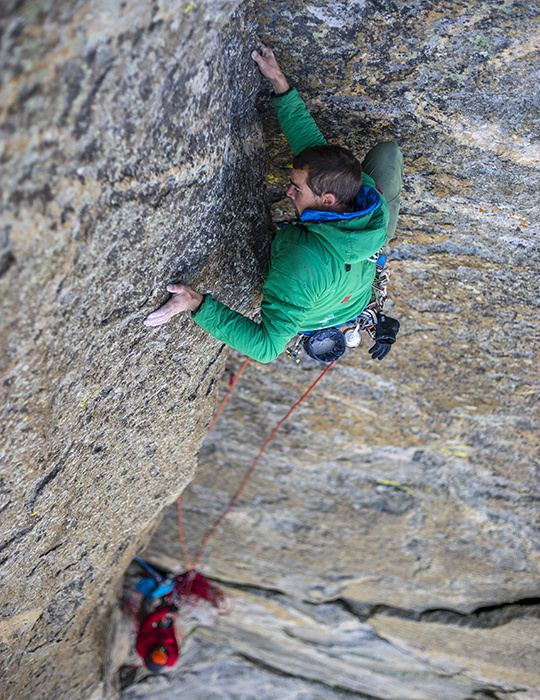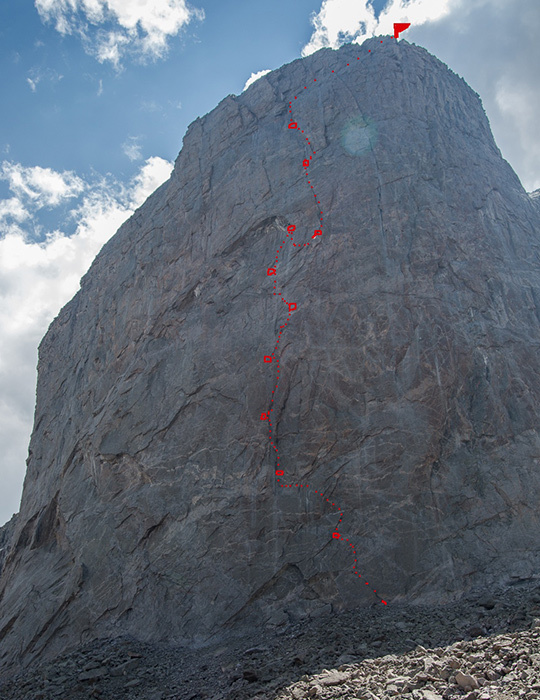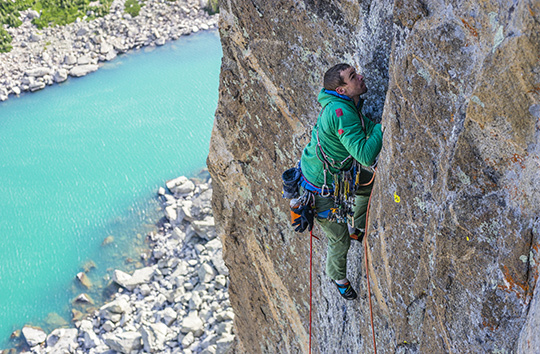
With a nearly 20-mile approach and the Wind River Range’s fickle weather, climbing on Mt. Hooker’s precipitous 1,800-foot north face is not for the faint of heart–or quadricep. This August two groups braved the hike to complete difficult free climbing projects on what Josh Wharton described on mountainproject.com as “the premier backcountry big wall in the Wind Rivers, if not the Lower 48.” David Allfrey, Nik Berry and Mason Earle nabbed the FFA of Hooker’s Sendero Luminoso, a 13-pitch 5.13d. Wharton and Whit Magro also freed a 12-pitch variation of the Boissonneault-Larson, naming their climb Hook, Line, and Sinker (5.12).
A year ago, Allfrey, Berry and Earle’s Sendero mania began when the trio arrived at the base of Hooker to find what they believed to be “the most continuously blank and steep part of the wall,” Berry wrote in the 2014 American Alpine Journal. “Initially, we believed we were on a new line, but after finding many old bolts we used our phone-a-friend card: We were on Sendero Luminoso (VI 5.10 A4),” authored by Steve Quinlan in 1980. The group went on to free Sendero’s initial seven pitches that year before escaping onto Shady Lady (VI 5.11 A4). Still, they felt their project incomplete without freeing all of Sendero. “It is a perfect line and [Quinlan’s] vision was extraordinary,” Berry wrote.

A few weeks ago, almost exactly a year after their initial foray, the team returned to mop up their unfinished business with the route. “I was supper stoked to get back out there and finish what we had started,” Berry wrote in an email to Alpinist.
Their persistence paid off. “The first 5 pitches [of Sendero Luminoso Free] actually follow an original attempt of the wall, joining Sendero Luminoso at the base of the crux pitch, which we dubbed the ‘A3 Beauty,'” Earle said on mountainproject.com of their ascent path. “From here, the route takes a bee-line to the top of the wall, following an immaculate seam through the otherwise blank shield of rock.”
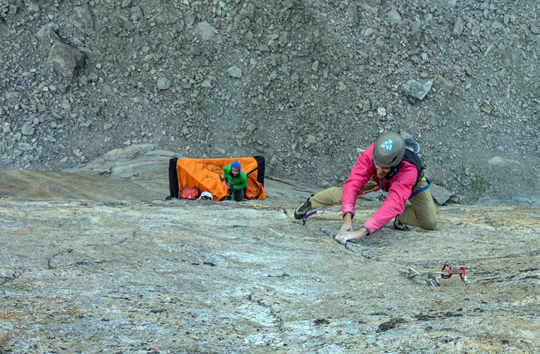
Berry, who led most of the pitches on the one-day free ascent, told Alpinist the crux pitch, “requires a great amount of precision and power. It is critical to climb the lower portion efficiently so you have energy to execute the upper boulder problem.”
While Allfrey, Berry and Earle realized their goals on Sendero, Magro and Wharton completed their own Hooker free ascent. Beginning on a rising ramp near the center of the wall, the duo bore left onto the Boissoneault-Larson. “The route goes left low into a dihedral that the B+L avoided,” Wharton wrote in an email to Alpinist. “From the top of Pitch 5 it is independent from the original aid line for three pitches, two of which are part of the ‘Free Eye,'” a climb first freed by Pat Goodman, Taki Miyamoto and Dave Sharratt during the 2010 free ascent of Third Eye.
“Hook, Line, and Sinker follows splitter cracks, marble-like walls with in-cut edges, and a stunning pitch that follows a golden tufa of quartzite,” Magro explained to Alpinist. “It’s amazing.” With steep and sustained climbing, the route proved exciting throughout. “Of the 12 pitches on the route, I’d say only three are pitches that wouldn’t be popular at the crag,” Wharton wrote in an email.
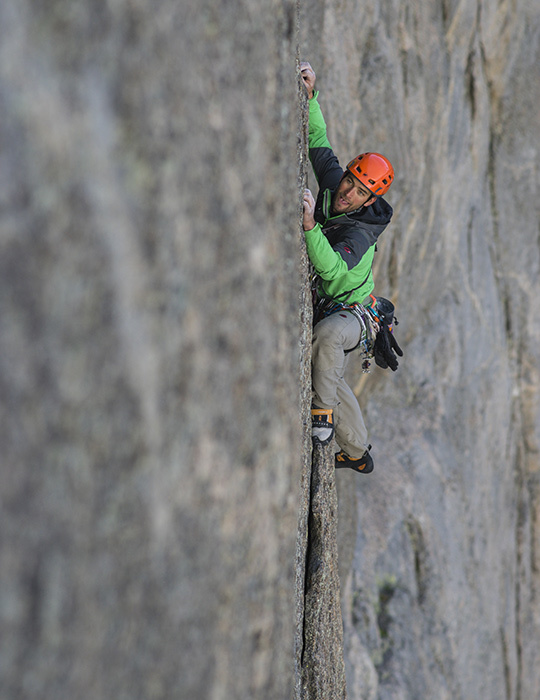
Because the route turned out to be much more moderate than Magro and Wharton had originally assumed, their focus shifted, and they aimed to create “a high quality free line that would be fun to repeat…i.e. not a ‘head point’ style route that’s a pain in the ass for everybody but the first ascent team,” Wharton wrote on mountainproject.com. They spent three days working on the first half-dozen pitches before climbing the entire route in a single day.
Despite a busy season, the free climbing options on Mt. Hooker are far from tapped, Wharton says, “I think it’s fair to say that there is more potential for high quality, difficult free routes on Hooker than any other wall I’ve seen in the States.”
